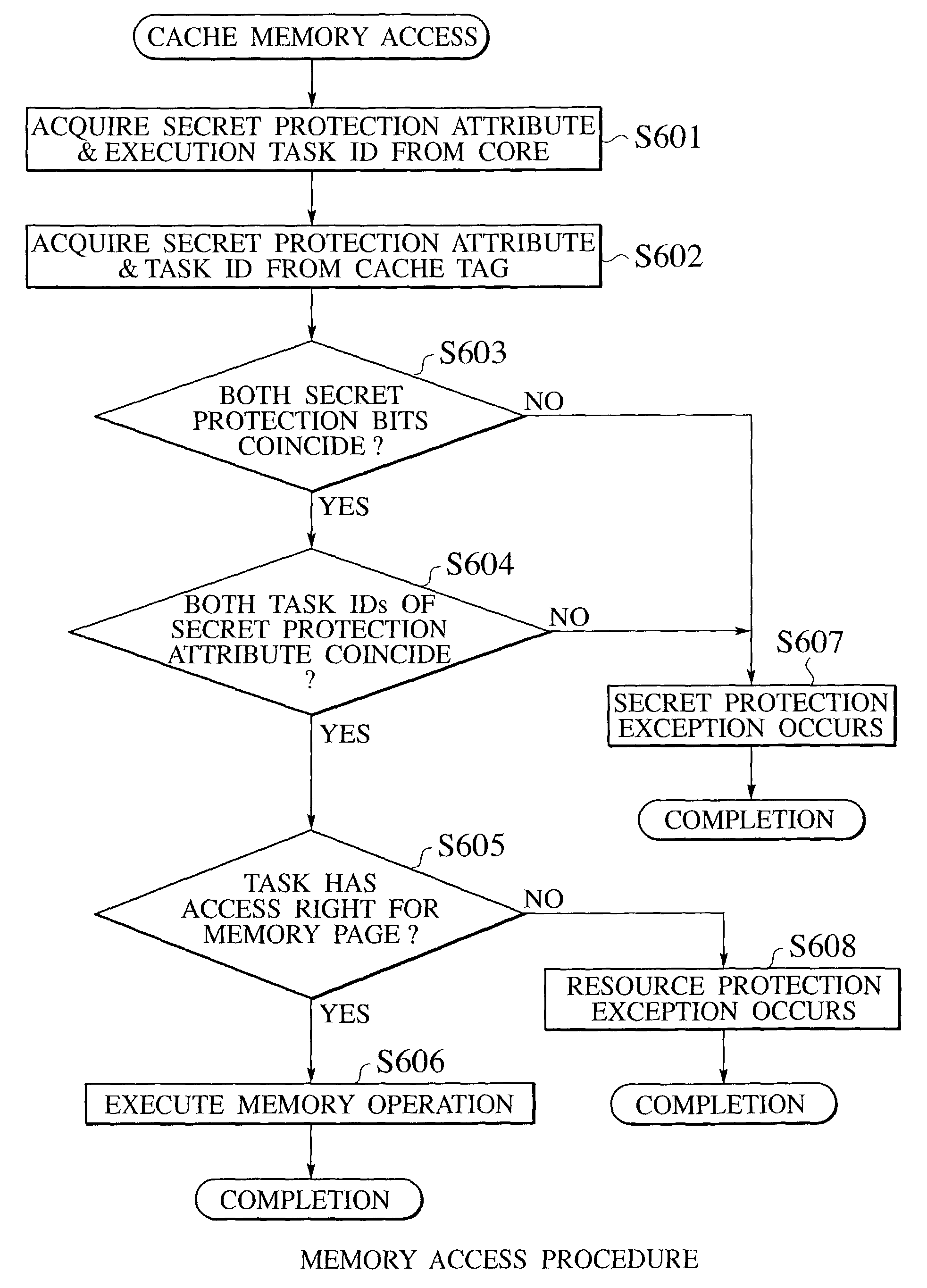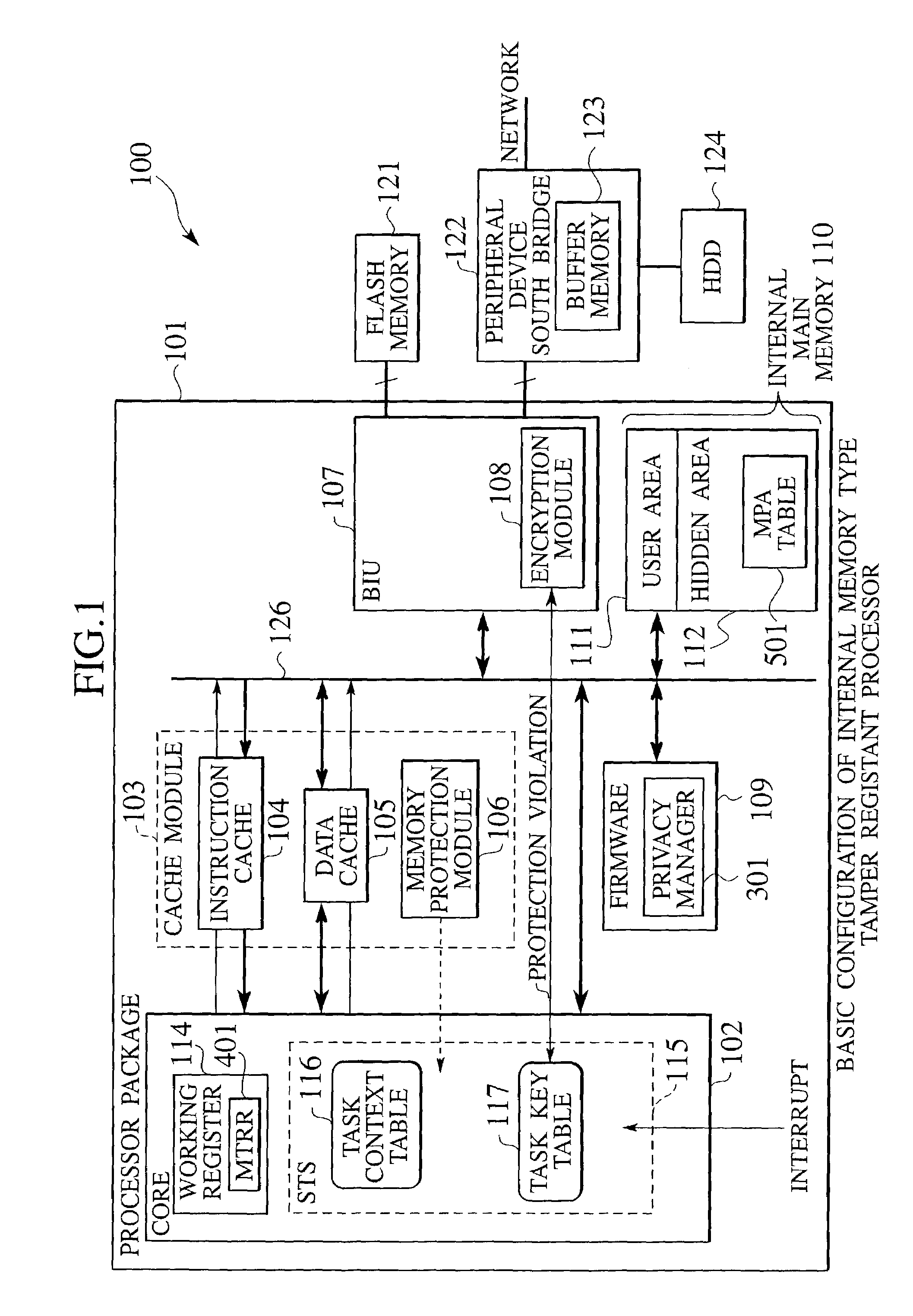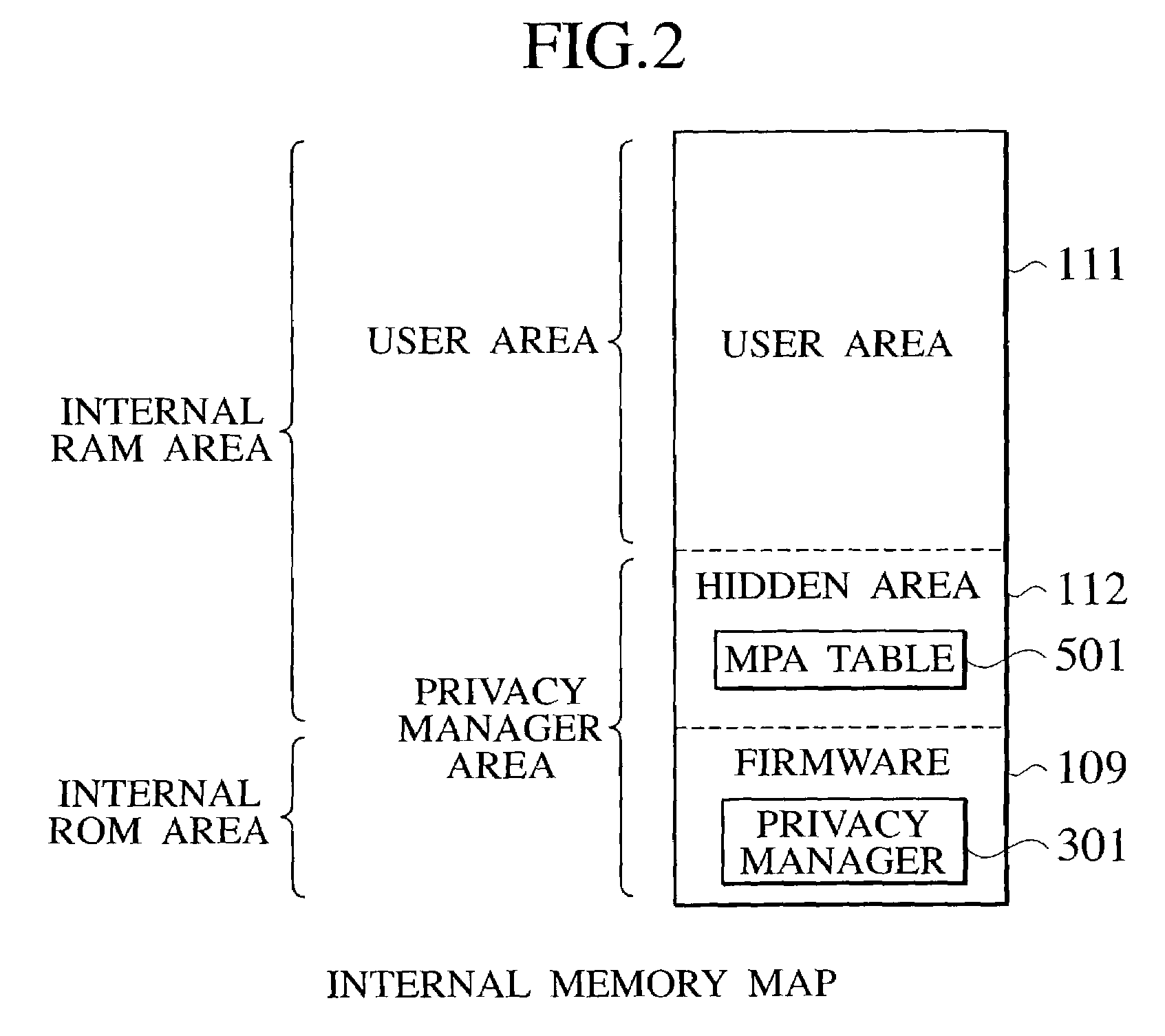Internal memory type tamper resistant microprocessor with secret protection function
a microprocessor and internal memory technology, applied in the field of tamper-resistant microprocessors, can solve the problems of reducing the encryption processing load, the operation of the program is willfully changed, and the possibility of hostile operations, etc., and achieves efficient internal data management and large internal memory capacity.
- Summary
- Abstract
- Description
- Claims
- Application Information
AI Technical Summary
Benefits of technology
Problems solved by technology
Method used
Image
Examples
first embodiment
[0052]FIG. 1 shows a schematic configuration of the internal memory type tamper resistant microprocessor according to the present invention. A processor 100 has a processor core 102, a cache module 103, a bus interface unit (BIU) 107, a firmware (ROM) 109 that contains a privacy manager (secret protection management unit), and an internal memory 110, inside a processor package 101, all of which are inter-connected through an internal bus 126.
[0053]The processor core 102 has a working register to be used by the currently executed program, and a task switching unit (STS: Secure Task Switcher) 115. The working register 114 contains an MTR (Memory Type Range) register 401. The MTR register 401 stores a requested secret protection attribute (RPA: Requested Protection Attribute) for specifying whether the task requests the secret protection for an internal memory region (that is, a memory page) that is an access target, or not. The task switching unit 115 has a context key table 116 for m...
second embodiment
[0114]By the configuration of the second embodiment, the memory access of the task is consistently protected from the intentional memory alteration by the OS, as follows.
[0115]Suppose that the task TØ carries out the “n” memory operations Op1 to Opn with respect to the memory page MØ of some address AØ, from the initial state of the memory page MØ. The initial state may be indeterminate, but there is a need to obtain the result in the final state by surely carrying out the operations Op1 to Opn. Of course the memory operations by another task should not be mixed during this process. The operation order of operations Op1 to Opn should not be changed and any operation should not be omitted. If the page is initialized even once in a course of a series of operations, the result will become different from the expectation.
[0116]In the method of the second embodiment, the task TØ issues a memory operation Op1 with respect to the memory page MØ, by setting the address of the memory page MØ ...
third embodiment
[0125]The third embodiment is directed to the internal memory type microprocessor which has a virtual memory mechanism. In particular, the prevention of the memory page substitution attack that can be a problem in the processor having the virtual memory mechanism will be described.
[0126]In the system having the virtual memory mechanism, the OS can allocate arbitrary virtual address to arbitrary page of the physical memory. Also, for this allocation, different allocations can be used depending on the tasks. As a descriptor of the allocation, a table on the internal main memory called page table will be used. The page table will be described below.
[0127]At a time of the memory access, in order to convert the virtual address into the physical address at high speed, only the necessary portion of the page table is often read into a special cache memory in advance. This temporary memory is called a TLB (Translation Look-aside Buffer).
[0128]The reading of the page table into the TLB can be...
PUM
 Login to View More
Login to View More Abstract
Description
Claims
Application Information
 Login to View More
Login to View More - R&D
- Intellectual Property
- Life Sciences
- Materials
- Tech Scout
- Unparalleled Data Quality
- Higher Quality Content
- 60% Fewer Hallucinations
Browse by: Latest US Patents, China's latest patents, Technical Efficacy Thesaurus, Application Domain, Technology Topic, Popular Technical Reports.
© 2025 PatSnap. All rights reserved.Legal|Privacy policy|Modern Slavery Act Transparency Statement|Sitemap|About US| Contact US: help@patsnap.com



